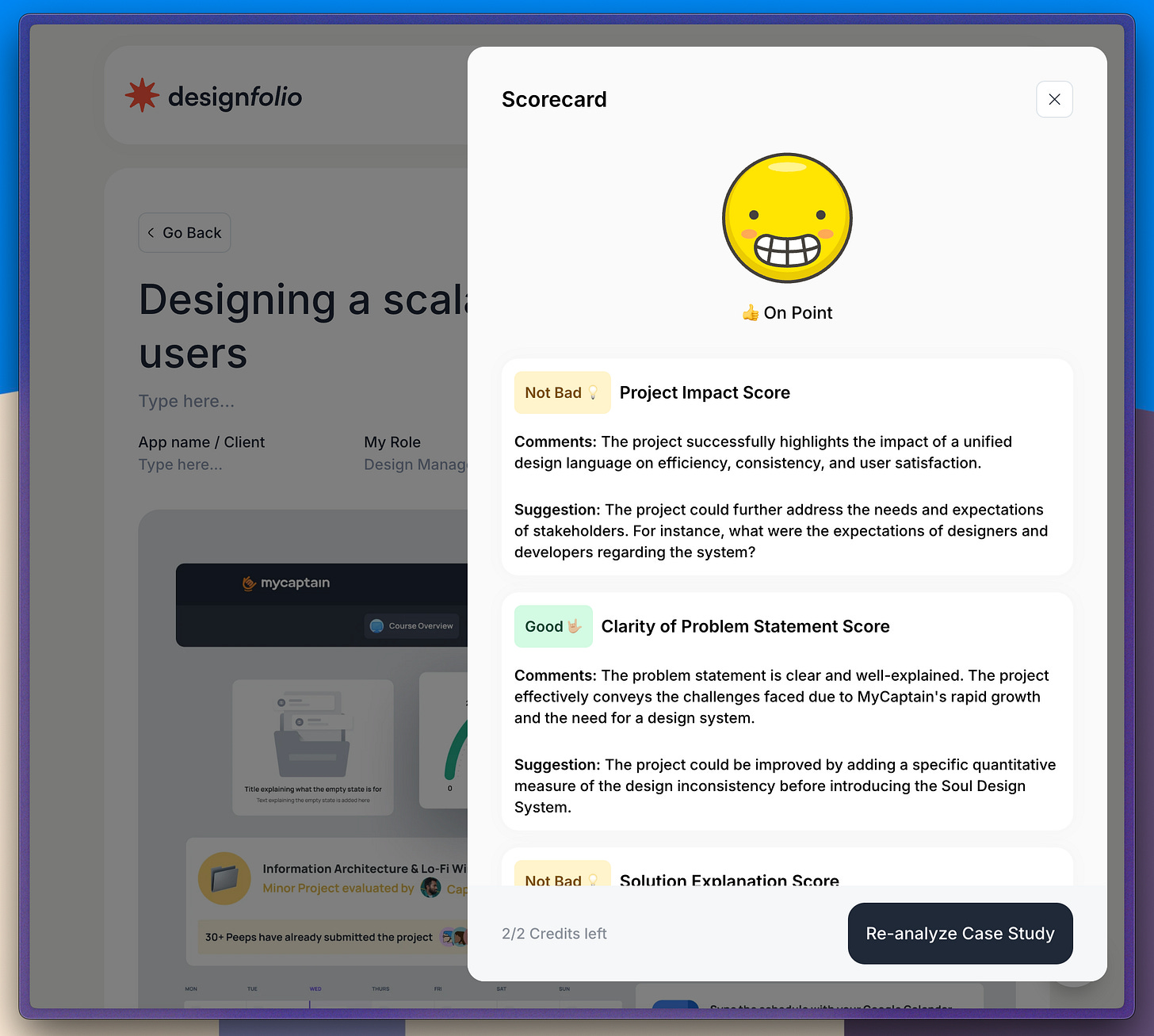Your UX case study might come out STUPID!
Sorry to burst your bubble - Your case study is pointless without measuring the right parameters.
"Think of your case study like the fairy tales we loved as kids—would they have been as memorable without a meaningful, moral-filled ending? Of course not!"
We loved them because they had direction.
Similarly, a perfect case study follows the right path. It's crucial to ensure you're heading in the right direction, chasing the correct signposts for success.
This newsletter will reveal all the key signposts to guide your UX case study, helping you achieve maximum efficiency and success.
Metric 1: Project Impact
This is about understanding if the project truly helps its users.
Asks questions like, "What problem are we solving?" "Who benefits?" and "What’s the real outcome?"
If these questions are clear and well-answered, the project is likely well thought out.
Metric 2: Clarity of Problem Statement
A strong problem statement makes it obvious why this problem matters and sets up the case for why a solution is needed.
This evaluates how clearly the case study defines the problem the project aims to solve.
Metric 3: Solution Explanation
Here, we check if the case study explains the solution well. This means showing what the solution actually does, how it fixes the problem, and why it benefits the users.
Metric 4: Readability & Writing Style
This looks at how easy and pleasant the case study is to read. Good readability means the text is clear, engaging, and not overly complex.
Metric 5: Estimated Time to Read
This metric considers whether the case study is concise enough to keep the reader’s attention while providing sufficient depth.
A well-balanced length is essential for readability.
Metric 6: Use of Action Verbs
This metric is about how action verbs are used throughout the case study to add energy and impact to the writing.
Effective use of these verbs helps to create a sense of dynamism and engagement.
Metric 7: Structure & Flow
This is about the order of ideas. A good case study flows logically, moving smoothly from explaining the problem to presenting the solution and finally showing the results.
Metric 8: Clear Objectives and Goals
This metric is about whether the case study clearly outlines the project’s objectives and goals. Ideally, these should be specific, measurable, and tied to tangible outcomes.
Metric 9: Impact & Results
This is where the case study shows the “proof” of the project’s success (or lessons learned if it didn’t go as planned). It uses data or feedback to show what happened because of the project.
Metric 10: Lessons Learned & Reflections
Here, we look for insights gained from the project, especially any challenges that came up and how they were tackled, as well as takeaways from the experience.
Metric 11: General Presentation & Professionalism
This is the “polish” check. A well-presented case study should be neat, consistent, and look professional, giving a good impression of the author’s attention to detail.
DON’T evaluate these metrics yourself.
Instead 👇
→ Go to Designfolio by hitting the button below:
→ Sign up
→ Add your case study or use our AI to help write it
→ Finally, click "Analyze Project using AI"
The AI evaluates your case study using the above discussed metrics.
It will compare your work to top case studies of designer from Meta to Google, giving you a score.
If you love what we're building, we'd really appreciate it if you could share it with your network.



